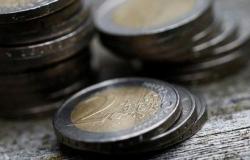
Since the triumph of the sovereigntist William Lai (Lai Ching-te) In the elections of January 13, China has maintained its pressure campaign on Taiwan without major changes, through a series of measures aimed at conditioning the next Taiwanese government.
Considered an “independence” and a “troublemaker” by Beijing, Lai will take office as president on May 20 after an inauguration ceremony at Taiwan’s presidential palace, where he will deliver a speech that will be closely followed by the authorities. Chinese.
During the time between the elections and his inauguration, Lai has reiterated on several occasions his offer of dialogue to China “without preconditions”a position rejected by the Beijing Government, for which this dialogue is only possible around the principle of “one China”.
In this context of no official contact between both parties, China has carried out a set of military, political and economic actions with the intention of making the government work of the new island leader difficult.

As soon as the elections concluded, Taiwan suffered the loss of a diplomatic ally, the island nation of Nauru, which on January 15 announced the breaking of diplomatic relations with Taipei to establish them with Beijing, in what Taiwan interpreted as a move by China to “suffocate” the island.
Taiwan, which still maintains diplomatic recognition by twelve countries, including Paraguay and Guatemala, is also not expected to participate in the general assembly of the World Health Organization (WHO) this year due to Chinese rejection of its presence.
On January 30, the Civil Aviation Administration of China (CAAC) announced the modification of several air routes near the median line of the Taiwan Strait, an unofficial border that had been respected by Beijing and Taipei for decades.
The Taiwan Mainland Affairs Council, the body in charge of relations with China, noted at the time that the decision not only threatened air safety, but also constituted “a deliberate attempt to use civil aviation as cover for political objectives.” and possibly military aimed at altering the status quo in the strait.”
The waters of the strait have also been the scene of multiple tensions between Beijing and Taipei in these months: on February 14, an illegal boat from China entered the waters of the Kinmen, an archipelago under Taiwanese control located a few kilometers from the Chinese coast, and two of its four crew members died after a chase by the Coast Guard from Taiwan.
Since then, the Chinese Coast Guard has not stopped organizing patrols in the area, reaching its peak on May 9, when the Taiwanese Coast Guard expelled eleven official Chinese ships – four from the Coast Guard and seven from other administrations. – that had entered the waters of the Kinmen.

The Asian giant’s Armed Forces have continued to carry out military exercises around Taiwan, which over the last four months has detected more than 500 Chinese military aircraft crossing the median line of the strait or flying over the self-proclaimed Air Identification Zone (ADIZ). ) Taiwanese.
These maneuvers have increased in intensity in recent weeks, with Chinese aircraft passing just over 70 kilometers from the northern city of Keelung or integrating “combat readiness patrols” with Navy ships.
In fact, Taiwan’s Ministry of National Defense (MDN) notified this Wednesday the presence of 45 Chinese military aircraft in the vicinity of the island, the highest number since September of last year.
China has taken advantage of these months to deepen its ties with Taiwan’s largest opposition party, the Kuomintang (KMT), highlighting the meeting, on April 10, between the Chinese president, Xi Jinping, and the former Taiwanese president. Ma Ying-jeou (2008-2016) in Beijing.
During the meeting, Xi assured that “there are no forces that can separate Taiwan from China” and that the “differences” in their political systems “cannot change the fact that the two sides are one country.”
Weeks later, China received the visit of an important KMT parliamentary delegation and announced several “detente” measures, such as the resumption of trips to Taiwan for residents of Fujian province (southeast) or the opening to the import of products agricultural and fishing goods from the island, showing their willingness to cooperate with the Taiwanese opposition.
(With information from EFE)





